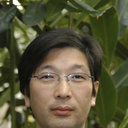Phenolic Compounds from the Aerial Parts of Blepharis linariifolia Pers. and Their Free Radical Scavenging and Enzyme Inhibitory Activities.
Keywords
Abstract
Background: Blepharislinariifolia Pers. (Family: Acanthaceae) is used in traditional medicines as a general tonic and for the treatment of various health problems in Sudan. The main aim of this study was to isolate and identify the major chemical constituents from the aerial parts of B. linariifolia and evaluate their bioactivities. Methods: The dried aerial parts of the plant were extracted successively with 100% acetone and 50% acetone, and thereafter the combined extract was subjected to repeated column chromatography to isolate the main components. Free radical scavenging activity was evaluated using the 1,1-diphenyl-2-picrylhydrazyl (DPPH) free radical method, and in vitro enzyme inhibitory activities against α-glucosidase, pancreatic lipase, and mushroom tyrosinase were evaluated. Results: From the detailed chemical analysis, verbascoside (1), vanillic acid (2), apigenin (3), and 6''-O-p-coumaroylprunin (4), were isolated and their structures were identified on the basis of their nuclear magnetic resonance (NMR) spectral data. Among the isolated compounds, verbascoside (1) showed the most potent free radical scavenging activity (IC50 = 22.03 ± 0.04 μM). Apigenin (3) and 6''-O-p-coumaroylprunin (4) showed promising inhibitory activities against all tested enzymes. Apigenin (3) showed the most potent inhibitory activity against α-glucosidase and tyrosinase (IC50 = 34.73 ± 1.78 μM and 23.14 ± 1.83 μM, respectively), whereas 6''-O-p-coumaroylprunin (4) showed potent inhibition for lipase (IC50 = 2.25 ± 0.17 μM). Conclusions: Four phenolic compounds were isolated and identified from B.linariifolia acetone extract, which are reported for the first time from this plant. All compounds showed good DPPH free radical scavenging activities, with verbascoside (1) being the most potent. Apigenin (3) was the most active as α-glucosidase and mushroom tyrosinase inhibitor, while 6''-O-p-coumaroylprunin (4) showed potent inhibitory activity for pancreatic lipase.


